Oleh : DR. Zamri Arifin The aim of this article is breifly survey of the historical trends in the development of Arabic prose literature particularly in the early Abbasid period with special reference to the work of al-Jahiz. The Abbasid period is known as the richest intellectual and literary age of the Arabs. At this time, Arabic literature reached a high standard and complexity. Baghdad, the new capital for the Abbasid government and one of magnificent cities of the medieval world, became the centre of learning of every kind of intellectual life including literature.
The aim of this article is breifly survey of the historical trends in the development of Arabic prose literature particularly in the early Abbasid period with special reference to the work of al-Jahiz. The Abbasid period is known as the richest intellectual and literary age of the Arabs. At this time, Arabic literature reached a high standard and complexity. Baghdad, the new capital for the Abbasid government and one of magnificent cities of the medieval world, became the centre of learning of every kind of intellectual life including literature.
It is found that al-Jahiz, who will be our focus in this article, is rated as the most popular prose writer during the golden period and played an important role in the development of this genre.
Introduction
It was general knowledge that the Arabic language and Arab speech are divided into types; one is rhymed poetry and the other is prose. As a result, Arabic literature contains a rich body of poetry (shi’ir) or prose (nathr). And almost all student of Arabic literature in modern times agrees that the Arabic word nathr is equivalent to the English word “prose”. By refering to the history of Arabic literature, it is found that in early Arabic literature especially in the Umayyad period and the beginning of the Abbasid period, a kind of secretary art was employed to lay down the rules of conduct and behaviours for different classes of people. These rules were written in various literary styles and introduced in the shape of poems and anecdotes, etc. Thus, whoever occupies himself with classical Arabic literature will sooner or later find numerous prose works have come down from this period such as Risala ila al-kuttab by cAbd al-Hamīd al-Katib and al-Adab al-kabīr and al-Adab al-saghīr by Ibn Muqaffac.
Certainly, this type of writing is also a popular literary exercise in the Abbasid age. Some scholars claimed that in Arabic prose literature, especially in belles letter during the Abbasid period, writers such as al-Jahiz (d. 255/885), Ibn Qutayba (d. 276/890), al-Tanukhī (d. 384/994), and Abu Hayyan al-Tawhīdī (d. 419/1028) developed this branch of literature work into a height never attained before (Chejne, 1969:67). Few specimens of such writing have been preserved by classical scholars. Special mention should be made of the works of al-Jahiz.
Al-Jahiz’s Life
Biographical sources are agreed upon his ism (name): cAmr b. Bahr b. Mahbub al-Fuqaymī al-Kinanī al-Laythī al-Basrī. They also agree on his laqab (nickname): al-Jahiz (the google eyes) (Lane,1863:382) which must have been given to him in childhood. His kunya (surname) is Abu cUthman. Yaqut al-Hamawī records in his bibliographical dictionary that al-Jahiz forgot his kunya for several days (Yaqut, Vol.XVI:74).
According to the other tradition, al-Jahiz is also known by the nickname al-Hadaqī as he sometimes introduces himself to other people in his hometown as al-Hadaqī . As a matter of fact, al-Jahiz is not happy with all these nicknames, he urges the people in his hometown to call him cAmr, his real name which he quite happy with. Al-Ibshīhī in his al-Mustatraf records some verses of Abbasid poetry which describes al-Jahiz’s face as being uglier than a pig (Al-Ibshīhī, Vol .I.1952: 28) However, this is not surprising, as al-Jahiz himself informes us that the Caliph Mutawakkil intended to appoint him as tutor to his sons, but was deterred by his ugliness, and dismissed him with a present of ten thousand dirhams (Al-Yaficī, Vol. II: 162)
Al-Jahiz was born in Basrah; however, the date of his birth cannot be determined precisely. Dates from 159 A. H. (Amin, Vol.I:408), 160 A.H. and 168 A.H (Al-Afghani, 1962:206) have been suggested. The most we can do is to place his date of birth somewhere in the middle of the second century of hijrah, particularly during the regency of al-Mansur, the second Caliph of the Abbasid dynasty who was in power from 136 A.H. to 158 A.H (Ibn al-Athīr Vol. V, 1965: 461). Yaqut said that al-Jahiz was a mawla (client) of the Banu Kinana, and his grandfather, Fazarah was black (Yaqud, Vol. XVI: 74).
Not much is known about al-Jahiz’s childhood. From the few references to his childhood, it is reported that his family was very poor. He lived with his mother in small house in Basrah. Al-Jahiz was seen selling bread and fish on the Sayhan (Yaqut, Vol. XVI:74), a canal in Basrah, dug by Yahya bin Khalid al-Barmakī (d.c.182/805). Sometimes al-Jahiz received some occasional gifts from unexpected patrons instead of selling fish and bread. Here, one can catch brief glimpses of the independently-minded boy of his future service to Arabic literature.
We find in the references of his biography that the turning point in al-Jahiz’s life came when he move to Baghdad, where he had close ties with court official and influential Abbasid figures. According to Harun, al-Jahiz was at that time fifty years old (Harun, 1983:4). This means that al-Jahiz spent half the period of his life in his birthplace, Basrah, before he decided to move to Baghdad in the reign of the Caliph al-Ma’mun. During his reign, the Caliph recognised the potential of al-Jahiz to be a scholar.
Al-Ma’mun himself is known for his awareness of his contribution to the intellectual life of his age. It is reported that al-Ma’mun asked al-Jahiz to write a book about al-Imamah (Al-Jahiz, Vol. IIIa:374). From this moment, al-Jahiz’s brilliant career got its start particularly when the Caliph al-Ma’mun was very pleased with the quality of his works. Al-Jahiz also had a close ties with Muhammad b. cAbd al-Malik b. al-Zayyat (Ibn Zayyat) the vizier of al-Muctasim. As well as being a vizier, Ibn Zayyat was also a famous adīb. He died in 233 A.H. during the reign of Caliph al-Mutawakkil (Ibn al-Taqtaqī, 1927:175-177). It is reported that al-Jahiz received a gift of four hundred acres of land from him (Pellat:6). During his vizierate, al-Jahiz had a chance to visit some other cities, such as Cairo in Egypt and Damascus in Syria and within this time he had frequent return trips to Basrah (Al-Fakhurī: 18).
Al-Fath b. Khaqan (d. 247/861), who is a powerful statesman and a famous littérateur, is another important figures that al-Jahiz had close ties with (Ibn Khallikan, Vol. I: 88; see also al-Kutubī, Vol. II:246). During his vizierate, he helps al-Jahiz develop close ties with the caliph al-Mutawakkil and he also asks al-Jahiz to accompany him on trip to Sham and then to Egypt (Kitapchi, 1972:211). Nevertheless, although, in this age of patronage, al-Jahiz presents himself to his readers as an independent author who has received no commission because when asked if he had a plantation in Basrah, al-Jahiz replied that his establishment in Basrah consisted of himself “and a woman to serve her, a man servant and a donkey” (Sandubī: 32).
Ibrahīm b. Sayyar b. Hanī, who is better known as al-Nazzam and born in Basrah, is also an important figure that had a great influence on the personality and life of al-Jahiz. He was a great scholar of Mutazilah and his followers were known as al-Nazzamiyyah (Al-Maqrizī, Vol. II: 346). Al-Nazzam was al-Jahiz’s first teacher in Mutazilite doctrine. Al-Mascudī (d. 345/956) informs us that al-Jahiz was the ghulam (page/boy) of al-Nazzam (Al-Mascudī, Vol. VIII: 33). Al-Jahiz was proud of his teacher and it is reported that he claimed that al-Nazzam was a Mujaddid (reformer) in the second/eight century (Al-Balkhī, 1974: 256).
A careful reading of the references, we do at least know that al-Jahiz also had close ties with other important figures during his time, such as Ibrahīm b. cAbbas al-Sulī (d. 234/857), Thumamah b. al-Ashras (d. 213/828), Abu Muhammad al-Yazīdī (d. 202/817), Ahmad b. Abī Du’ad (d. 240/854), and his son Muhammad. Thumamah and Ahmad b. Abī Du’ad are al-Ma’mun’s advisers and both of them are said to have played a significant role in encouraging the Abbasid caliphs to hold and enforce their dogma of I’tizal as the state belief. Nevertheless, patronage of these people sometimes put somebody in dangers, as well as riches (Hutchins: 4). For example, al-Jahiz was nearly to be tortured in Tannur by Ahmad b. Abī Du’ad. However, al-Jahiz reportedly fled at that time (Yāqūt, Vol. XVI:77).
The first official profession al-Jahiz is known to practise was that of Katib (Secretary). This was during al-Ma’mun reign, however, it is reported that al-Jahiz held this government post in Dīwan al-rasa’il, and he resigned after three days (Yāqūt, Vol. XVI: 79). Concerning the duty of secretary at Dīwan al-rasa’il, Qudamah b. Jacfar (d. 326/938) describes that is being similar to the duty of a minister (Qudamah b. Jacfar, 1986:19). It was the ultimate goal for many Baghdadi or Iraqi families since it not only led to rich and the possibility of placing family and friends in similar posts but also was the route to the vizierate.
Before the end of his life, al-Jahiz left the capital city Baghdad, returning to his hometown in Basrah. This was probably before the assassination of al-Mutawakkil and al-Fath b. Khaqan in 247/861 (Bray, 2004:9). When al-Jahiz came back to his hometown, he was partially paralysed and complained that while one side was totally insensitive, the other ached with pain if a fly passed. The cause of al-Jahiz’s illness has been stated by Ibn Abī Usaybicah (d. 668/1270) in his cUyun al-anba’ as follows: “one-day al-Jahiz has been invited to a dinner at house of vizier, Ismacīl b. Bulbul (d. 278/892), and he was accompanied by Yuhanna b. Masawayh (d. 243/857). Fish and milk were among the dishes that had been served. Al-Jahiz ate both of these dishes. As a result, al-Jahiz suffered from hemiplegia (falij) and gout (nigris)” (Ibn Abī Usaybicah, 1965: 181). According to report mentioned in Sarh al-cuyun by Ibn Nubatah (d. 768/1366), Ibn Bukhtīshuc (d. 256/870), a doctor, was among those who were present at the time. He has already warned al-Jahiz from eating fish and milk together. Nevertheless, al-Jahiz did not heed this warning and proceeded to eat (Ibn Nubatah: 253-254).
In the final year of his reign, the caliph al-Mutawakkil sent a delegation to Basrah inviting al-Jahiz to meet him; however al-Jahiz declined the invitation for reasons of ill health and age (Ibn Khallikan, Vol. III: 474). During his illness he often said to his friends: “Sicknesses of opposite against my body. If I eat anything cold, it strikes my feet, and if I touch anything hot, it goes to my head” (Yaqut, Vol. XVI:114).
Al-Jahiz died in Basrah, his birthplace, in the month of Muharram 255 A.H.(either the first or last month of 868 A.D.) during the reign of the Caliph al-Muctazz (Al-Isbahanī, Vol. V: 326). This means that al-Jahiz lived up to age of ninety-six (Golziher: 81). By referring to the date of his death, it seems al-Jahiz had lived and accompanied twelve great Abbasid caliphs from al-Mansur (r.126-158 A.H.) to al-Muctazz (r. 252-255 A.H.).
One further point should be stressed regarding the cause of death of al-Jahiz. There is a different version of his death from a later tradition in which Ibn al-cImad (d. 1089/1679) quotes in his Shadharat al-dhahab that al-Jahiz was crushed to death under a pile of books in his private library in his home (Ibn cImad, Vol. II: 122). However, it is obvious to us that the most likely cause of death was old age, because al-Khatīb al-Baghdadī (d. 463/1071) in his Tarīkh Baghdad informs us that when al-Jahiz died, his age was more than ninety years old (Al-Khatīb al-Baghdadī, Vol. XII: 218).
Al-Jahiz’s works
It is not known when al-Jahiz began writing but, according to Pellat, his first works certainly date from before the end of the second/eight century (See Pellat, ‘al-Jahiz’, in: Abbbasid Belles-Letter: 79). More specifically, he suggests to be dated from roughly 200/815-816 (The Encyclopeadia of Islam, art. Al-Djahiz, Vol. II:385). Perhaps by this time, al-Jahiz had already written some works which his first work is about al-Imamah. Quotation from al-Jahiz himself in his al-Bayan wa al-tabyīn will be interesting to show this point: “After (Caliph al-Ma’mun) having ordered al-Yazīdī to look through the books which I had written on the imamate and to convey to him his opinion about their contents, and after having read them himself …( al-Ma’mun) sent for me and said to me, “Someone whose intelligence we respect and whose information can be trusted informed me that these books were well composed and of great usefulness. I said to him, “Maybe the description will prove superior to firsthand contact”. But when I looked them over I found that on inspection they were better than the description of them. So I examined the books more closely and found that my pleasure with them had been a greatly increase by a second reading as it had been the first… This is a book, which does not require the presence of its author or other supporters to defend its contention. It combines depth of meaning with fullness of treatment. It has excellent diction and smoothness of style. It is a book for the marketplace or the palace, for the common man or the specialist” (Al-Jahiz, Vol. IIIa:374-375). This statement can be accepted and helps to understand the circumstances in which al-Jahiz started his writing. Through this work, al-Jahiz won the compliments of the Caliph al-Ma’mun.
The list of the works of al-Jahiz can be found in several premier sources. For instance, Yaqut in his Mucjam al-udaba’ has listed one hundred and twenty-eight titles of al-Jahiz’s works, Ibn al-Nadīm in his al-Fihrist has listed around one hundred and twenty one titles (Ibn Nadīm: 207-209), and Hajjī Khalīfah in his Kashf al-zunun has another account with approximately around seventy titles (Hajjī Khalīfah, Vol. V: 802-803). In the first volume of al-Hawayan, al-Jahiz himself only mentions thirty-six titles of his works (Al-Jahiz, Vol.I b: 13-16). In modern times, Hasan Sandubī was the first scholar of al-Jahiz who has made a list of al-Jahiz’s work in his Adab al-Jahiz. He has collected nearly one hundred and fifty-nine titles of al-Jahiz’s works (Sandubī: 117-144). However, according to Sandubī and followed by Ghurayyib, some of this great output of al-Jahiz is wrongly attributed to him. For example, both of them assumed that al-Ibil, al-Taj fī akhlaq al-muluk, Tanbīh al-muluk wa al-maka’id, al-Hanīn ila al-awtan, al-Dala’il wa al-ictibar cala al-khalq wa al-athar, Salwah al-kharīf bī munazarah al-rabī c wa al-kharīf, al-Mahasin wa al-addad and al-Hadaya was not included in al-Jahiz’s work (Ghurayyib, 1975: 41; Sandubī: 145-158). In addition, some of the works of al-Jahiz survived only a part, although they still appear under the title of the whole original works and some other works were lost altogether and only quotations from them in other references could be found (Najm: 35).
Subsequently, Brockelmann, who is the first western authority of Arabic literature, has set out his list of the works of al-Jahiz in his great book Tarīkh al-adab al-cArabī.. After that, Pellat, the French Arabist, has also set out a provisional list of al-Jahiz’s work in Arabica 1956/2 based on the Brockelmann’s book. However, according to Pellat, the most recent published catalogue of al-Jahiz lists two hundred and thirty-one authentic works, and only two-dozen have survived intact (Pellat, ‘al-Jahiz’ in: Abbasid Bellers letters:81).
The most important, however, of the voluminous work of al-Jahiz consists of his cultivation and extension of the category of adab. This has been described as a literary genre comprising works which combine entertainment and instruction. Some scholars described that almost all al-Jahiz works dealing with too many things, animals lore, Arabic rhetoric and poetry, supposed racial and national characteristics, ethical qualities, human sexual behavior, the various professions and ways of making a living, or any of countless other matters (Pellat,‘al-Jahiz’in:Abbasid Bellers letters: 81).
Based on this wide contribution, Hutchins claims that al-Jahiz is one of the first of the major authors to use the new secular Arabic art prose in specifically Arab and Muslim ways (Hutchins: 3). Whilst Gibb describes al-Jahiz as independenct thinker, becauce he resigned an official post three days after his appointment and even in Islamic law he formed a school of his own (Gibb:75). Hirschfield also stresses the same view, he says “al-Jahiz is akeen observer, an original thinker, and reveals deep thoought even in apparently tribal subjects, and his field is wide”. Marmura describes al-Jāhiz as littérateur par excellence, as versatile and witty, while his style of writing was characterized by assonances, balance phrasing and tendency to digress (Marmura, 1976: 68).
In any case, McDonald says “if we are to judge from the title of so many of his works, both extant and lost, al-Jāhiz must have thought of himself as primarily a Muctazilite theologian and political controversialist, and after this an essayist and an adīb (McDonald, 1992:5). G. E. von Grunebaum in one of his brilliant essays also suggests that Arabic prose literature has reached a first perfection in al-Jahiz who he says, was eminently successful in ‘Arabizing’ Arabic prose by providing a great deal of new matter, not derived from Iranian sources.
The forementioned are the most important views of the significance of al-Jahiz’s work and his contribution to the development of Arabic prose literature which scholars have expressed. Although these views differ in detail, they agree in general that the nature of al-Jahiz’s work focused on adab and social issues including religious and political elements.
Brockelmann in his discussion of al-Jahiz’s work has classified it according to whether it has been printed or edited under the following heading: theological and politico-theological writings, history, anthropology, general ethics, professions, animals, languages, geography, anthologies and polemics. He added that the lost works covering the further categories of, games, plants, and other substance, literary history, work of entertainment (Brockelmann, Vol.III: 110-125).
It seems that the selection of his books and rasa’il represent the author’s wide range of interest and views. However, Pellat suggests that al-Jāhiz had only two main fields of activity; firstly, theology and politics, and secondly, adab (Pellat : 82). In other words, as Gibb describes, al-Jahiz’s work “widened the range of Arabic literature to cover all aspects of contemporary life and remain to this day the master pieces of Arabic prose. No doubt he chose his subject for his own pleasure, but at the same time almost all his writing were directed to specific, though often well-concealed, ends” (Gibb: 71).
Al-Jahiz’s extant works
Some of the books and rasa’il from the list of al-Jahiz’s work have been edited by many leading scholars of al-Jahiz. Nowadays, a number of al-Jahiz’s works such as al-Hayawan, al-Bayan wa al-tabyīn, al-Bukhala’, al-Mahasin wa al-addad, al-Bursan wa wa al-curjan, al-Taj fī akhlaq al-muluk, al-Bighal and other collection of his rasa’il have become widely available in scholarly editions of varying quality. Thanks for eastern and western scholars, viz. cAbd al-Salam Muhammad Harun, Taha al-Hajirī, G. van Vloten, Charles Pellat and many others with their efforts in editing and reviewing all of al-Jahiz’s work. Among these works, the three principal ones are al-Hayawan, al-Bayan wa al-tabyīn and al-Bukhala’. In this article, it would be useful to offers a brief study of two of the main al-Jahiz’s extant books particularly al-Hayawan and al-Bayan wa al-tabyīn.
Al-Hayawan
This book has been edited by cAbd al-Salam Muhammad Harun in seven volumes and printed several times in Cairo and Beirut. The first edition has been printed at Maktabat al-Khanjī, Cairo, 1938. The latest edition of al-Hayawan that we have has been edited by Yahya al-Shamī and printed at Dar wa Maktabat al-Hilal, Beirut, 1997. Describing this work, Pellat said as follows “this is a monumental and chief work of al-Jahiz, which is not so much a bestiary as a genuine anthology based on animals, leading off sometimes rather unexpectedly into theology, metaphysics, sociology etc.; one can even find embryonic theories, without it being possible to say how far they are original, of the evolution of species, the influence of climate and animal psychology, which were not developed till the nineteenth century” (See The Encyclopeadia of Islam, art. Al-Djahiz, Vol. II: 386).
There are three notable points from Pellat’s statement; the first is that al-Hayawan is a genuine anthology of material on animals. The second point is al-Jahiz’s tendency to present his varied subject matter with little regard for specialization or organization. The third point is the embryonic theories that the book contains (Mansur:33). In another place Pellat states “The al-Hayawan, which is a work of adab of religious character and not of natural science, is characterized by the greatest disorder. This book is also unfinished, though it is continued in al-Bighal’ (Pellat:22).
The exact date of composition of al-Hayawan is controversial. Pellat for instance, says that it must have been written before 233/847 (Pellat:22). This means that this book has been written before the death of Ibn al-Zayyat, one of Abbasids court official and he had given him five thousand dinars for this book, who is seen here as the addressee of the book based on a report cited by Yaqut (Yaqut, Vol. XVI: 106). However, al-Hajirī, who is another authority on al-Jahiz, does not value this citation and assumes that al-Hayawan was written much later than 232/846, depending on al-Jahiz own reference to the reign of al-Mutawakkil (Al-Hajirī:397-399). Furthermore, al-Basīr, suggests that the composition of al-Hayawan should have stretched over a considerable period of al-Jahiz’s life (he suggests that al-Jahiz wrote it when he was in his eighties), however, he offers no evidences for this (Al-Basīr, 1970: 58). From this point of view, we can safely conclude here that al-Jahiz wrote al-Hayawan in the latter part of his life, or in the time of al-Mutawakkil or later.
Among Arabs scholars, Jabrī, in his work on al-Jahiz, gives a special treatment of al-Hayawan. He sees the significance of this work in its representation of al-Jahiz’s scientific attitude in addition to artistic value (Jabrī:111). Al-Hajirī also discusses the significance of al-Hayawan when he observes that its significance lies in al-Jahiz’s exposition of a vivid and rich picture of time, the trends of thought of the age and the different tendencies of Muslim society side by side with the treatment of animals (Al-Hajirī: 422-423). Therefore, al-Husrī (d. 413/1022), the author of Jamc al-jawahir, admits that this book remains as one of al-Jahiz’s peculiarities, particularly the way how could he had attempted this work when he was old and paralysed (Al-Husrī, 1953 :204). This is the most important point of the significance of al-Hayawan, which scholars have expressed in different views.
Speaking about the structure of his al-Hayawan, al-Jahiz asserts: “And thus the chapters- Allah preserve them – were created which require profuseness and length. The words for varied content, few words are for little meaning. Simple content, obvious in its form and aim, requires fewer words than a complicated one whose aim is less clear. Even if all eloquent people tried to express the latter by means of concise words, without any additional explanation, they would not succeed. If the content requires a lot of words, the hearers are ready to listen to them” (Al-Jahiz, Vol.I b: 7).
The original sources of the material on which al-Jahiz depended throughout al-Hayawan are the Qur’an, Hadīth, Arabic poetry, proverbs, and reports handed down by oral tradition. However, the greater part of his sources of al-Hayawan consists of pre- Islamic and early Islamic poetry, which he quoted extensively, and historical accounts from Jahiliyya, early Islam and the Umayyad and early Abbasid period because al-Jahiz found Arabic poetry contained a lot of knowledge concerning animals. It is interesting to note here that Islamic scholarship was at its height when al-Jahiz wrote this book.
For this reason, al-Jahiz also depends upon verses of the al-Qur’an not only in his discussion of theological and religious problems but also in the treatment of subtle philosophical questions. As for animals, there are six Sura (chapter) in the Qur’an having the title of the name of animals namely al-Baqarah (the heifer), al-Ancam (the catlle), al-Nahl (the bees), al-Naml (the ants), al-cAnkabut (the spider), al-Fīl (the elephant). It is remarkable to note that al-Jahiz studied some of three hundred and fifty animals which he then described and classified.
Like the Qur’anic verse, the Hadīth of the Prophet also constitutes one of al-Jahiz’s sources. Al-Jahiz, however, finds in the prophetic tradition convincing evidences to support his idea. Besides the Qur’an and the Prophetic tradition, there are more than three hundred proverbs cited in al-Hayawan because al-Jahiz could find a suitable proverb to support his argument in any context.
The well-known tradition or report handed down orally by transmitters is another original source for al-Jahiz in al-Hayawan because he had strong confidence in the knowledge of the Arabs or Bedouin. Besides the previous mentioned literary sources, al-Jahiz’s own personal experience played a serious role in his work. He often said that nothing less than eyewitness or actual seeing would satisfy him which Mansur described that it was the custom of al-Jahiz to listen to everyone, to observe, and to use his careful ‘goggle-eyes’ to see every single and subtle thing (Mansur:33).
Beside these materials, al-Jahiz quotes also from time to time information from al-Hayawan by Aristotle. McDonald reported that F. Sezgin in his Geschichte des arabischen Schrifttums identifies thirty-four passages where al-Jahiz quotes directly from Ibn al-Bitrīq’s (d. 328/940) translation. It is interesting to note that, while he speaks of Aristotle with the greatest respect, he does not hesitate to express polite doubt when he believes him to be wrong as can be seen in al-Hayawan.
Later, this book became one of the main references for other scholars after al-Jahiz. Al-Damirī (d. 808/1405) for instance, followed al-Jahiz’s approach when he writes his Hayat al-hayawan al-kubra. According to Hajjī Khalīfah, cAbd al-Latīf al-Baghdadī (d. 626/1231) also had also tried to summarise al-Hayawan by al-Jahiz, however his summary has not survived (See Hajjī Khalīfah, Vol. I: 457; al-Suyutī: 311; Kahhalah, Vol. VI:15). Ibn Sana’ al-Mulk (d. 608/1211), an Egyptian prose writer, also attempts to summarise al-Hayawan by al-Jahiz in his book entitled Ruh al-hayawan, but this book is also lost (See Zamri Arifin, 2000:129-141). Tadhīb hayawan lī al-Jahiz by Ibn Manzur (d. 711/1311) is the only summary of al-Hayawan that has survived in which Ibn Manzur has also cited some of the anecdotes from Ruh al-hayawan by Ibn Sana’ al-Mulk.
Al-Jahiz normally in all his work exhibits a strong desire to record as much oral material as possible, whether it is relevant to his main purpose or not. As a result the main point of the book is hidden among irrelevancies and has to be ferreted out. Harun, the editor of the scientific edition of al-Hayawan, has constructed a valuable index in several parts occupying most of the seven volumes. Finally, we would like to quote McDonald’s view regarding al-Jahiz’s approach in this book. He claims that “al-Jahiz was not a specialist in the study of animals, nor did he have any practical expertise in the handling of animals, or in falconry or farriery” (McDonald:4). He further argues “one of the results of this is that it is often difficult or impossible to identify the animals of which al-Jahiz is speaking, and no doubt it is difficult to explain what any animals look like in the absence of a picture” (McDonald:5). However, almost can be said here is that al-Hayawan, is a foundation for further study in that field.
Al-Bayan wa al-tabyīn
This book was among the most important of al-Jahiz’s works. Ibn Khaldun, a notable scholar of the ninth/fourteenth century, remarked in his great work al-Muqaddimah, on the importance of al-Bayan al-tabyīn by al-Jahiz particularly in Arabic prose literature as follows: “We heard our shaykh (teacher) say in class that the basic principles and pillars of this discipline are four works, the Adab al-katib by Ibn Qutaybah, al-Kamil by al-Mubarrad, al-Bayan wa al-tabyīn by al-Jahiz and the al-Nawadir by Abu cAlī al-Qalī’. All other books depend on these four and are derived from them (Ibn Khaldun, Vol. III:340-341).
The first edition of this book has been edited by cAbd al-Salam Muhammad Harun in 1948-50 into four volumes (and also in other editions e.g. Muhibuddīn al-Khatīb, undated and Sandubī, in 1345 H.). Harun also constructed a valuable index in several parts occupying most of the forth volume. According to Yaqut, this book was written in two copies, and the second copy was much better (Yaqut, Vol. XVI:106). We do not know which copy that we are using today. In addition, there have been some controversies over the correct reading of the title of this work either al-Bayan wa al-tabayyun or al-Bayan wa al-tabyīn. However, this book is better known among scholars of Arabic literature as al-Bayan wa al-tabyīn.
This book dealt with literary topics; as can clearly be seen from the title itself. The word “al-Bayan” means elegance of expression, and “al-tabyīn” means clarity of exposition. Hence, al-Bayan wa al-tabyīn is an anthology of poetry and oratorical prose (Pellat, ‘al-Jahiz’, in: Abbasid Belles Letters:88). There are many oral materials that have been recorded by al-Jahiz. The author depended, throughout this book, on the original sources of his material such as the Qur’an, Hadīth, Arabic poetry, proverbs, and reports handed down by oral tradition (See Harun, Vol. IV, pp. 103-321). One can notice that al-Jahiz used al-Istitrad (digression), his famous method to compose this book. A sense of humour can be seen in this book, for example, in the volumes two and four, al-Jahiz offers us more than forty pages of anecdotes entitled “Bab al-nawka wa al-majanīn wa al-aghbiya’”.
This book contains several important topics concerning the study of Arabic language and literature, which had been summarised by Harun, the editor of the book, in the first volume (Harun, Vol. I: 7). Taha Husayn seems to have agreed with Harun’s edition whenever he also suggests that the important subject that had been discussed by al-Jahiz in this book can be divided into these four groups: 1) a discussion on Arabic phonetic; 2) a discussion on Arabic grammar and its relation with phonetic; 3) a discussion on some of the rhetoric rules; and 4) a discussion on the rules of oratory and speeches (See Taha Husayn, 1982:7-8). However, according to al-Bahitī, the content of the al-Bayan wa al-tabyīn was not come down to us in its original structure, as had been listed by Harun, because it may been added to and changed unreservedly by the copyist (Al-Bahitī Vol.117, 1950:50).
There is no definite sign to show exactly when al-Jahiz wrote his al-Bayan wa al-tabyīn. We only know without any doubt that he wrote al-Hayawan in the later part of his life, in the time of al-Mutawakkil or later, and was perhaps followed by al-Bayan wa al-tabyīn. This sequence is reliable since al-Jahiz in al-Bayan wa al-tabyīn mentions al-Hayawan as a previous work (Al-Jahiz, Vol. III a:302). There are two aims in the composition of this book, one is that al-Jahiz tries to demonstrate Arab superiority to all other nations in the literary field particularly in cIlm al-Balaghah (rhetoric), and the other one, as was explained by al-Jahiz himself, is to add to the arguments directed against members of other cultures especially the Shucubiyyah group who claimed that the Arabs were barbarian (See al-Jahiz, Vol. II a: 5; Pellat, ‘al-Jahiz’, in: Abbasid Belles Letters: 88). Because of this reason, some scholars of al-Jahiz have said that al-Jahiz has played a role as defender and solicitor for the Arabs in the Abbasid period against their enemy viz. the Shucubiyyah.
Many scholars pointed out that this book is a great achievement of al-Jahiz’s writing in the literary field. Abu Hilal al-cAskarī, Ibn Rashīq al-Qayrawanī and al-Mascudī for instance, said that al-Bayan wa al-tabyīn was the first Arabic book which focused on the discussion of cIlm al-Balaghah or al-Bayan (Rhetoric). Al-Jahiz elaborates his theory of explication of al-Bayan in this four volumes work which includes the definition, forms and meaning of al-Bayan, etc. Al-Jahiz also exploits religious texts (i.e. the Qur’anic verses and Hadīth) in his attempt to highlight his theory. It has been reported that the people from the town of Basra, where al-Jahiz was born and died, were very proud of four books which were written by their scholars, i.e. al-Bayan wa al-tabyīn and al-Hayawan written by al-Jahiz, al-Kitab written by Sībawayh (d. c. 180/796) and al-cAyn written by al-Khalīl b. Ahmad al-Farahidī (d. c. 175/791) (cAlī: 387). This is clear evidence of the importance of this book in the literary field.
In modern times, Gibb for example, says that in al-Bayan wa al-tabyīn, al-Jahiz displayed the rich resources of the Arabic humanities, and taught the classical philologists that their studies served a wider purpose than the mere classifying of linguistic niches (Gibb: 71). Ahsan describes al-Bayan wa al-tabyīn as a most important book since it offers valuable data on the mode of costume of the people in classical period particularly in the Abbasid era (Ahsan, 1979:4). In conclusion, it can be said that al-Bayan wa al-tabyīn represents al-Jahiz’s contribution to the study of literary, philological, linguistic, and sociology studies.
Conclusion
It can be seen from the long life of al-Jahiz, that he was no doubt the product of the Golden age of Abbasid rule which, as Nicholson says, was marked by a great intellectual development. In his brief description of the atmosphere in which al-Jahiz’s mind was born, Nicholson says, “All sorts of new ideas were in the air. It was an age of discovery and awakening. In a marvellously brief space the diverse studies of theology, law, medicine, philosophy, mathematic, astronomy, and natural science attained their maturity, if not their highest development”. From the works of al-Jahiz’s, we would like to note here that some early writers, as were noted by Pellat, recognised the importance al-Jahiz and dubbed him as mucallim al-caql wa al-adab, which means “the teacher of reason and polite learning”, or in other words they said that the works of al-Jahiz teach us to reason first, and instruct us in literature next. Therefore, we may assume that all his works becomes the major sourcework on this important genre within the Arabic literary heritage.
Kamis, 22 Januari 2009
Al-Jahiz and the Abbasid Prose Literature
Langganan:
Posting Komentar (Atom)
























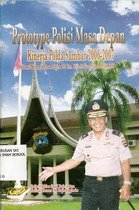
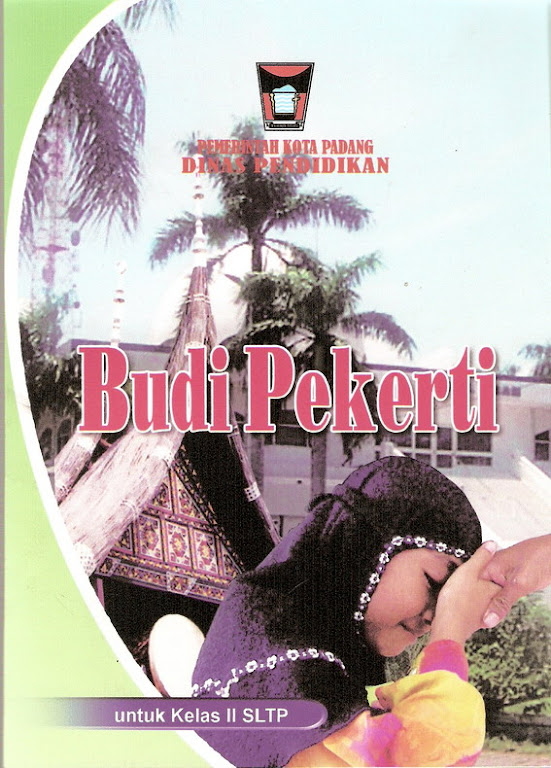



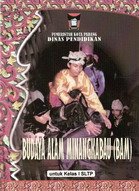

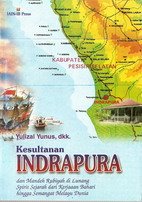



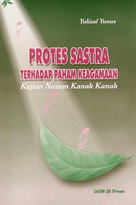
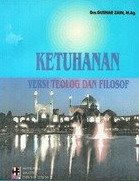




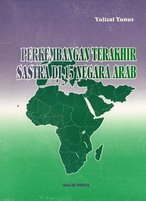











Tidak ada komentar:
Posting Komentar